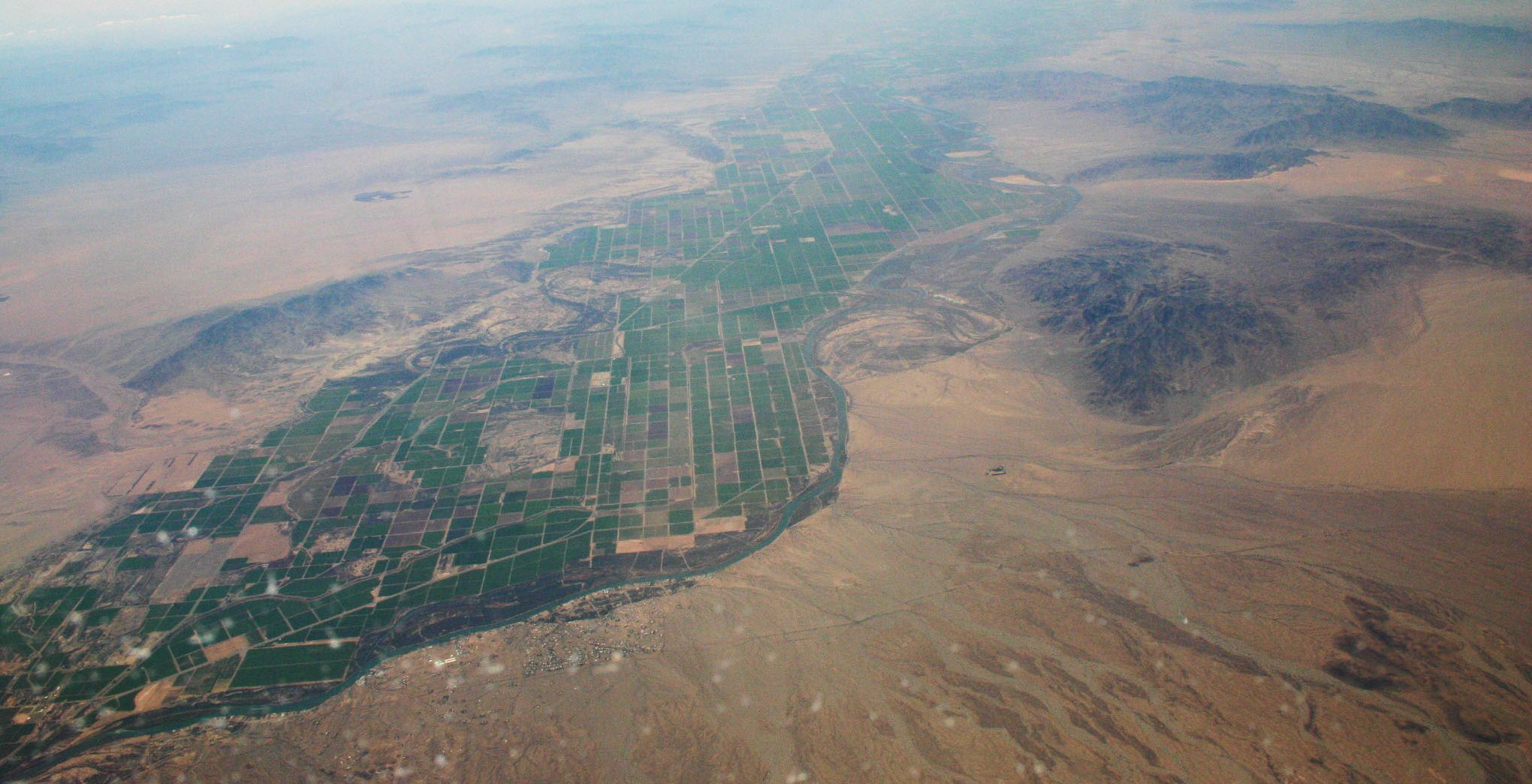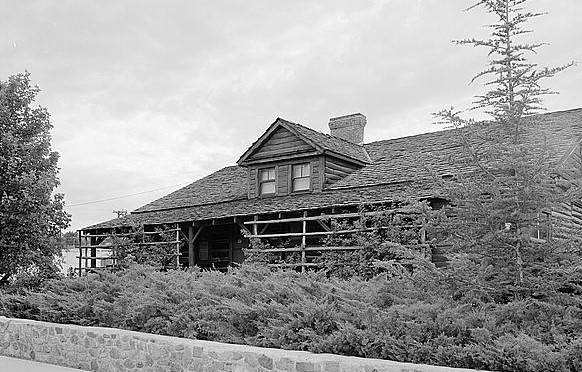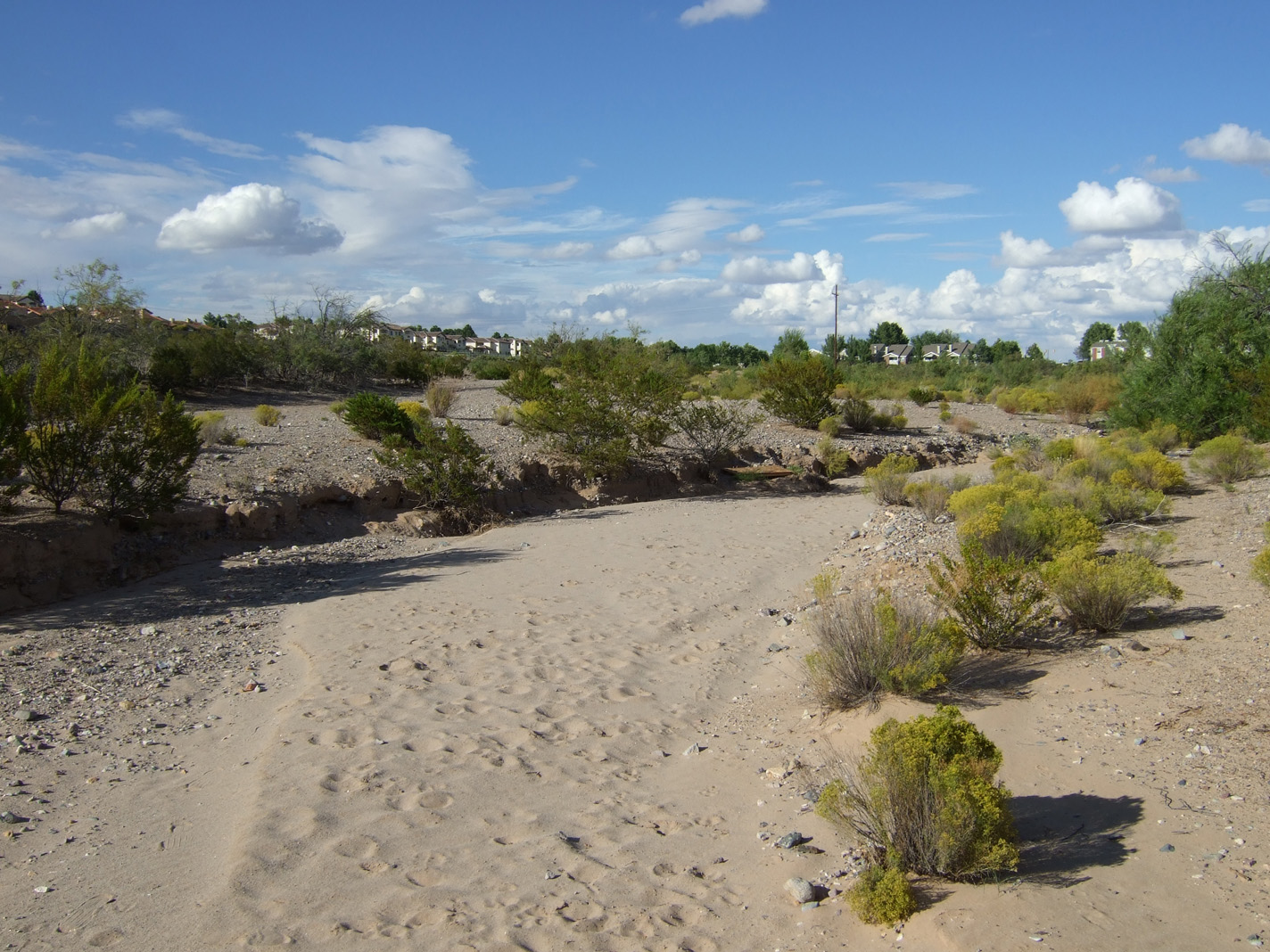|
Bouse Wash
Bouse Wash is one of the larger eastern-bank dry washes that enter the Colorado River in the Lower Colorado River Valley. It is located in La Paz County, extreme western Arizona. Geography Bouse Wash is located on the north rim of the La Posa Plain and the south rim of Cactus Plain. The Arizona town of Bouse is on Bouse Wash, northeast of the La Posa Plain, between the Bouse Hills and the Plomosa Mountains. Watersheds Bouse Wash drains into the Imperial Reservoir at the north end of the Colorado River Indian Reservation, south of Parker. The Tyson Wash mouth is at the southern end of the reservation. The Bouse Watershed abuts the Tyson Watershed. The Bouse and Tyson Wash river mouths are both on the eastern shore of the Imperial Reservoir, on the Colorado River. The Bouse Wash Watershed is west of a water divide that the Centennial Wash Watershed flows east from. Centennial is a tributary of the Gila River. Its confluence with the Gila is downstream from the confluence of th ... [...More Info...] [...Related Items...] OR: [Wikipedia] [Google] [Baidu] |
Parker Valley Facing S
Parker may refer to: Persons * Parker (given name) * Parker (surname) Places Place names in the United States *Parker, Arizona *Parker, Colorado *Parker, Florida *Parker, Idaho *Parker, Kansas *Parker, Missouri *Parker, North Carolina *Parker, Pennsylvania *Parker, South Carolina *Parker, South Dakota *Parker, Texas in Collin County *Parker, Johnson County, Texas *Parker, Washington *Parker City, Indiana *Parker County, Texas *Parker Dam, at Lake Havasu on the Colorado River between Arizona and California * Parker Road (DART station), a light rail terminal on Parker Road in Plano, Texas *Parker School, Montana *Parker Strip, Arizona *Parker Township, Marshall County, Minnesota *Parker Township, Morrison County, Minnesota *Parker Township, Butler County, Pennsylvania *Parker Center, a former police building in Los Angeles Elsewhere * C. W. Parker Carousel, a Burnaby Village Museum exhibit in British Columbia, Canada * Mount Parker (Philippines), a Mindanao island volcano of the P ... [...More Info...] [...Related Items...] OR: [Wikipedia] [Google] [Baidu] |
Tyson Wash
Tyson Wash is one of the larger eastern-bank dry washes that enter the Colorado River in western Arizona. It drains the La Posa Plain south-to-north and is also coincident with the Plain's southern two thirds. It is also the southwest drainage of a pair of drainages, the other being the Bouse Wash drainage. They are in the Lower Colorado River Valley, south of Parker, Arizona and both enter the region east of the Colorado River, with no Colorado River confluence; they both end at regions on the eastern border of the Colorado River Indian Reservation located along the Colorado River in the Parker Valley. The two drainages, the Tyson and the Bouse, enter upper regions of the Imperial Reservoir Drainage. Description La Posa Plain While northeasterly, the Bouse Wash drainage borders the ''Bill Williams River Drainage'', (almost a de facto separation line of the Mojave Desert northwest and the Sonoran Desert south and east), the Tyson Wash drains the extensive 75-mile (120&nbs ... [...More Info...] [...Related Items...] OR: [Wikipedia] [Google] [Baidu] |
Bradshaw Mountains
The Bradshaw Mountains ( yuf-x-yav, Wi:kañacha, "rough, black range of rocks") are a mountain range in central Arizona, United States, named for brothers Isaac and William D. Bradshaw after their deaths, having been formerly known in English as the Silver Mountain Range. History The first known settlements in the Bradshaws were a group of Yavapai people, called the Kwevkapaya who built forts and mined copper from around AD 1100 to 1600. The Walker party found gold, and within a few years, the Bradshaws were filling up with settlers mining for gold, silver, and copper. In the early part of the 20th century, most of the towns that had sprung up were little more than ghost towns. Geography Located approximately 5 miles (8 km) south of Prescott, Arizona, between the Agua Fria River on the east, and the Hassayampa River on the west, the range is 40 miles (64 km) long, and almost 25 miles (40 km) wide. Peaks * Mount Union, named during the Civil War, is the highe ... [...More Info...] [...Related Items...] OR: [Wikipedia] [Google] [Baidu] |
Prescott, Arizona
Prescott ( ) is a city in Yavapai County, Arizona, Yavapai County, Arizona, United States. According to the 2020 United States census, 2020 Census, the city's population was 45,827. The city is the county seat of Yavapai County. In 1864, Prescott was designated as the capital of the Arizona Territory, replacing the temporary capital of Fort Whipple, Arizona, Fort Whipple. The Territorial Capital was moved to Tucson, Arizona, Tucson in 1867. Prescott again became the Territorial Capital in 1877, until Phoenix, Arizona, Phoenix became the capital in 1889. Prescott has a rich history as a frontier gold and silver mining town. Mining and settlers brought frequent conflict with native American tribes in the area, including the Yavapai and Apache. Prescott was the home to Fort Whipple, Arizona, Fort Whipple from its inception, which acted as a base for campaigns against natives. Prescott was a stereotypical "wild west" town during the latter half of the 19th century; famous residents ... [...More Info...] [...Related Items...] OR: [Wikipedia] [Google] [Baidu] |
Hassayampa River
The Hassayampa River (Yavapai: Hasaya:mvo or ʼHasayamcho:) is an intermittent river, the headwaters of which are just south of Prescott, Arizona, and flows mostly south towards Wickenburg, entering the Gila River near Hassayampa. Although the river has only subsurface flow for much of the year, it has significant perennial flows above ground within the Hassayampa River Canyon Wilderness and the Nature Conservancy The Nature Conservancy (TNC) is a global environmental organization headquartered in Arlington, Virginia. it works via affiliates or branches in 79 countries and territories, as well as across every state in the US. Founded in 1951, The Natu ...'s Hassayampa River Preserve, near Wickenburg. The river is about long, with a watershed of , most of it desert. A local legend purports that anyone who drinks from the river can never again tell the truth. As an anonymous poet wrote: :Those who drink its waters bright – :Red man, white man, boor or knight, :Girls ... [...More Info...] [...Related Items...] OR: [Wikipedia] [Google] [Baidu] |
Gila River
The Gila River (; O'odham ima Keli Akimel or simply Akimel, Quechan: Haa Siʼil, Maricopa language: Xiil) is a tributary of the Colorado River flowing through New Mexico and Arizona in the United States. The river drains an arid watershed of nearly that lies mainly within the U.S., but also extends into northern Sonora, Mexico. Indigenous peoples have lived along the river for at least 2,000 years, establishing complex agricultural societies before European exploration of the region began in the 16th century. However, European Americans did not permanently settle the Gila River watershed until the mid-19th century. During the 20th century, human development of the Gila River watershed prompted the construction of large diversion and flood control structures on the river and its tributaries, and consequently the Gila now contributes only a small fraction of its historic flow to the Colorado. The historic natural discharge of the river is around , and is now only . These eng ... [...More Info...] [...Related Items...] OR: [Wikipedia] [Google] [Baidu] |
Centennial Wash
Centennial Wash is an ephemeral dry wash that forms the final watershed of the Gila River in central Arizona – before the river turns south. From the Centennial Wash confluence, the Gila turns south, then southwest to exit Arizona on the California border adjacent Yuma. The Centennial Wash drainage is adjacent to the south-flowing Hassayampa River Drainage on the east; the next drainage east is the Agua Fria Drainage (as shown on map). To the south as the Gila River makes its turns, arriving at the Painted Rock Reservoir, the Hassayampa and Centennial Wash drainages abut the ''Lower Gila–Painted Rock Reservoir Drainage''. See also * Bouse Wash * List of rivers of Arizona List of rivers in Arizona (U.S. state), sorted by name. By drainage basin This list is arranged by drainage basin, with respective tributaries indented under each larger stream's name. Colorado River *Colorado River—(downstream-to-upstr ... External links Centennial Wash Drainage MapLowe ... [...More Info...] [...Related Items...] OR: [Wikipedia] [Google] [Baidu] |
Water Divide
A drainage divide, water divide, ridgeline, watershed, water parting or height of land is elevated terrain that separates neighboring drainage basins. On rugged land, the divide lies along topographical ridges, and may be in the form of a single range of hills or mountains, known as a dividing range. On flat terrain, especially where the ground is marshy, the divide may be difficult to discern. A triple divide is a point, often a summit, where three drainage basins meet. A ''valley floor divide'' is a low drainage divide that runs across a valley, sometimes created by deposition or stream capture. Major divides separating rivers that drain to different seas or oceans are continental divides. The term ''height of land'' is used in Canada and the United States to refer to a drainage divide. It is frequently used in border descriptions, which are set according to the "doctrine of natural boundaries". In glaciated areas it often refers to a low point on a divide where it is ... [...More Info...] [...Related Items...] OR: [Wikipedia] [Google] [Baidu] |
River Mouth
A river mouth is where a river flows into a larger body of water, such as another river, a lake/reservoir, a bay/ gulf, a sea, or an ocean. At the river mouth, sediments are often deposited due to the slowing of the current reducing the carrying capacity of the water. The water from a river can enter the receiving body in a variety of different ways. The motion of a river is influenced by the relative density of the river compared to the receiving water, the rotation of the earth, and any ambient motion in the receiving water, such as tides or seiches. If the river water has a higher density than the surface of the receiving water, the river water will plunge below the surface. The river water will then either form an underflow or an interflow within the lake. However, if the river water is lighter than the receiving water, as is typically the case when fresh river water flows into the sea, the river water will float along the surface of the receiving water as an overflow. Al ... [...More Info...] [...Related Items...] OR: [Wikipedia] [Google] [Baidu] |
Parker, Arizona
Parker ( Mojave 'Amat Kuhwely, formerly 'Ahwe Nyava) is the county seat of La Paz County, Arizona, United States, on the Colorado River in Parker Valley. The population was 3,083 at the 2010 census. History Founded in 1908, the town was named after Ely Parker, the first Native American commissioner for the U.S. government. The original town site of Parker was surveyed and laid out in 1909 by Earl H. Parker, a railroad location engineer for the Arizona & California Railway. The town officially incorporated in 1948 and became the county seat for the newly created La Paz County on January 1, 1983. Camp Colorado and Parkers Landing The town's name and origin began when a post office called Parker was established January 6, 1871, at Parker's Landing and the site of the Parker Indian Agency, named for Ely Parker, on the Colorado River Indian Reservation, four miles downriver from the site of the railroad bridge of the modern town, to serve the Indian agency.John and Lillian Theoba ... [...More Info...] [...Related Items...] OR: [Wikipedia] [Google] [Baidu] |
Wash (creek)
An arroyo (; from Spanish arroyo , "brook"), also called a wash, is a dry creek, stream bed or gulch that temporarily or seasonally fills and flows after sufficient rain. Flash floods are common in arroyos following thunderstorms. ''Wadi'' (Arabic) is used in North Africa and Western Asia for similar landforms. The desert dry wash biome is restricted to the arroyos of the southwestern United States. Arroyos provide a water source to desert animals. Types and processes Arroyos can be natural fluvial landforms or constructed flood control channels. The term usually applies to a sloped or mountainous terrain in xeric and desert climates. In addition: in many rural communities arroyos are also the principal transportation routes; and in many urban communities arroyos are also parks and recreational locations, often with linear multi-use bicycle, pedestrian, and equestrian trails. Flash flooding can cause the deep arroyos or deposition of sediment on flooded lands. This ca ... [...More Info...] [...Related Items...] OR: [Wikipedia] [Google] [Baidu] |






